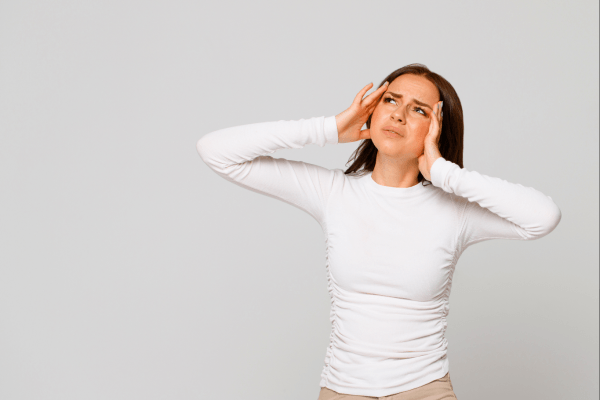1. Introduction
Motion sickness can feel like your body has betrayed you. Whether you’re on a boat, in a car, watching a screen, or simply scrolling your phone while in motion — the dizziness, nausea, and imbalance can feel unbearable.
For some, it’s a rare inconvenience. For others, it’s a chronic condition that limits everyday life. What many don’t realise is that motion sickness is not just a nuisance — it’s a sign that the vestibular system, the body’s internal balance system, is out of sync.
In this blog post, we’ll explore what motion sickness is, how the vestibular system is at the heart of the issue, and how vestibular physiotherapy can retrain the brain and body to restore balance, confidence, and freedom.
2. What Is Motion Sickness?
Motion sickness is a condition that occurs when there is a conflict between the signals your brain receives from your eyes, inner ears, and body. The classic version happens when you’re in motion — like riding in a car, boat, or airplane — but some people experience it even without movement, like watching fast-moving visuals on a screen or in virtual reality.
3. The Science Behind Motion Sickness
At the core of motion sickness is sensory mismatch. Your brain is constantly receiving input from:
- Your vestibular system (inner ear, detects motion and spatial orientation)
- Your visual system (eyes, tell you what you’re seeing)
- Your somatosensory system (skin, joints, muscles tell you what your body is doing)
When these systems send conflicting information, your brain gets confused.
Example:
You’re reading a book in the back of a car. Your eyes see a stationary page, but your inner ear feels the car turning, stopping, accelerating. The mismatch triggers the motion sickness response — which is, neurologically speaking, a form of protective panic from your brain.
4. The Role of the Vestibular System
The vestibular system, located in the inner ear, includes:
- Three semicircular canals: Detect rotational movement
- Otolith organs (utricle and saccule): Detect linear acceleration and gravity
These components send real-time information about head movement and spatial orientation to the brainstem, cerebellum, and higher cortical centres.
When the vestibular system is healthy and in sync with your visual and sensory input, balance is seamless. But if it’s damaged, deconditioned, or overly sensitive, your brain misinterprets signals and triggers nausea, dizziness, and anxiety.
5. Why Some People Are More Prone Than Others
Some people seem to be naturally immune to motion sickness, while others are affected by the slightest movement. Factors that increase susceptibility include:
- Vestibular hypersensitivity
- Migraine conditions (especially vestibular migraine)
- Vestibular Disorders including Benign Paroxysmal Positional Vertigo (BPPV)
- Anxiety and panic disorders
- History of concussion or head trauma
- POTS and dysautonomia
- Genetics
- Lack of exposure to motion (deconditioning)
Children between ages 2–12 are especially prone, but most outgrow it. Some adults, especially those with vestibular disorders, experience worsening symptoms with age or stress.
6. Symptoms of Motion Sickness
Motion sickness is more than just nausea. Symptoms may include:
- Dizziness or spinning sensations
- Sweating or clamminess
- Pale skin
- Headache
- Fatigue
- Burping or bloating
- Vomiting
- Sensation of falling or floating
- Panic or “shut-down” response
In people with vestibular dysfunction, symptoms can persist long after the motion stops — a phenomenon known as or Mal de Débarquement Syndrome (MdDS) or Persistent Postural Perceptual Dizziness (PPPD).
7. Common Triggers
- Cars, especially as a back-seat passenger
- Boats or ferries
- Turbulent flights
- Elevators or escalators
- 3D movies or virtual reality
- Amusement park rides
- Reading or scrolling while in motion
- Rapid head movements
8. Diagnosing Chronic Motion Sensitivity
If you feel dizzy, unsteady, or nauseated even when you’re not in motion, it’s a sign there may be an underlying vestibular issue. Diagnosis usually involves:
- Vestibular Physiotherapy Assessment including:
-Clinical History
-Oculomotor assessment
-Positional testing for BPPV
-Balance and Gait Analysis - Vestibular function testing (vHIT, Calorics,VEMPs)
Chronic motion sickness can overlap with or be a symptom of vestibular conditions such as:
- Vestibular Migraine
- PPPD
- MdDS
- Bilateral Vestibulopathy
- Central Vestibulopathies (Brainstem or Cerebellar issues)
9. Motion Sickness vs. Vestibular Disorders
It’s important to distinguish between occasional motion sickness and motion-triggered symptoms caused by an underlying vestibular disorder.
| Feature | Simple Motion Sickness | Vestibular Disorder |
| Triggers | Motion only | Motion + other triggers (e.g. stress, light, noise) |
| Duration | Short-lived | May persist hours to days |
| Frequency | Sporadic | Frequent or constant |
| Cause | Sensory mismatch | Damage or dysfunction in vestibular system |
| Treatment | Rest, OTC meds, Vestibular Rehabilitation | Vestibular rehabilitation |
10. Vestibular Deconditioning and Motion Sensitivity
If you’ve avoided travel, movement, or complex environments due to illness, your vestibular system may be deconditioned. Like a muscle that hasn’t been used, it becomes hypersensitive to motion, especially when reintroduced.
This explains why some people develop motion sickness more easily after a period of inactivity, chronic illness, or stress.
Vestibular physiotherapy can help recondition and desensitise the system.
11. How Vestibular Physiotherapy Works
Vestibular physiotherapy is a targeted rehabilitation approach that aims to:
- Desensitise the vestibular system
- Improve brain-vestibular integration
- Restore balance and gaze stability
- Reduce motion sensitivity and dizziness
It uses the principles of neuroplasticity — the brain’s ability to rewire and adapt — to train your brain to better tolerate motion and reconcile sensory inputs.
12. Key Techniques Used in Vestibular Rehab
Vestibular physiotherapists tailor programs based on individual assessment. Common tools include:
- Gaze Stabilisation Exercises
To train the eyes and brain to maintain focus while the head is moving.
Example: “X1 viewing” — focusing on a letter while turning your head side to side.
- Habituation
Gradual exposure to movement or positions that trigger symptoms, retraining the brain to stop overreacting.
Example: Repeated head turns, turning around, or other appropriate desensitisation exercises.
- Balance and Postural Control Training
Enhances input from the feet, eyes, and inner ear to help rebalance the body.
Example: Standing on foam, using balance boards, or walking with head turns.
- Sensory Integration Therapy
Combines vision, proprioception, and vestibular stimuli to help the brain coordinate all three efficiently.
Example: Visual motion desensitisation or desensitisation videos while sitting, walking or turning.
13. Real-Life Examples and Success Stories
Case 1: Lucy, 34 – Motion Sickness Since Childhood
Lucy avoided planes, buses, and even long car rides due to chronic nausea and dizziness. After 6 weeks of vestibular rehab focusing on habituation exercises and balance exercises, she was able to take her first ferry ride in 10 years.
Case 2: John, 56 – Post-Concussion Motion Sensitivity
After a mild TBI, John experienced vertigo when shopping, scrolling on his phone, or walking near traffic. Vestibular physiotherapy combined with balance training restored his tolerance within 3 months.
14. When to Seek Help
If motion sickness is:
- Frequent or debilitating
- Triggered by non-motion situations
- Lasting longer than a few hours
- Interfering with work, travel, parenting, or relationships
Don’t settle for “just take ginger or Travacalm” or “you’ll grow out of it.”
Vestibular physiotherapy can change your life by targeting the actual neural pathways causing the dysfunction.
15. Final Thoughts: Rebuilding a Balanced Life
Motion sickness is often dismissed as a minor problem — but for many, it’s a gateway to deeper dysfunction in the brain-body system. Understanding the vestibular roots of motion sensitivity opens the door to true recovery.
With vestibular physiotherapy, targeted retraining, and whole-body support, your brain can learn to adapt. Freedom from dizziness, nausea, and anxiety isn’t just possible — it’s within reach.






